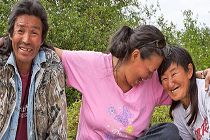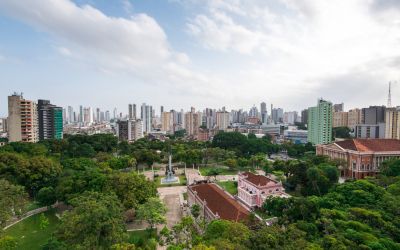The Inuit could provide the key on how to adapt to climate change
An ancient Canadian community could provide the key to how humans adapt to global warming.

An ancient Canadian community could provide the key to how humans adapt to global warming. Research in Canada's Arctic on the Inuit has put a human face to climate change and presented an opportunity to learn about sustainable ways to live in the natural world.
Barry Smit, Canada Research Chair in Global Environment Change, has studied how Arctic communities have adapted to rising temperatures caused by variable global weather patterns. "It's already affecting the people who live there," Smit was quoted as saying in a report from the Canadian Federation for Humanities and social Sciences called "Research highlights the "Human face" of climate change".
During his research projects Smit documented how Canada's Inuit dealt with changing ice levels, wind speed and migration routes. The goal of the research was to challenge the notion that the physical and social environment was unrelated.
"The ice is their highway. And one of the thing (s) they've noticed is that their highway is collapsing in places (it's) never collapsed before," he said. "…And they're having to figure out ways of adapting their livelihoods to face the changes caused by these changing conditions," Smit added.
Due to shifting migratory patterns of traditionally hunted animals, the communities have had to acquire supplies from shops. The subsequent lack of nutrition in their diet has led to dental complications and higher rates of diabetes.
Smit's tasks involved working with researchers and community stakeholders and he incorporated his research into the everyday activities of the communities. For instance, the Inuit helped define Smit's research by telling him that the changing winds that moved the ice to obscure places caused more problems than the warmer weather. For his part, Smit and his team helped set hunting quotas for the community and assisted in the construction of buildings on the melting permafrost.
The research was conducted with the help of ArcticNet, a network of centres in Canada that bring together scientists and managers with partners from Inuit organisations, and the International Polar Year Project, a collaborative international organisation researching polar regions.
Smit is not alone in telling the story of how the Inuit deal with climate change. The documentary film "Inuit Knowledge and Climate Change" had its world premiere on 23 October 2010 at the imagineNATIVE Film & Media Arts Festival in Toronto. The world's first Inuktitut language film on the topic, it took the viewer alongside elders and hunters to explore the social and ecological impacts of a warming Arctic Canada.
The film demonstrated that the Inuit approach to climate change was seen not only as a crisis, but as an opportunity to adapt, to find new techniques for living sustainably within the natural world. Having survived for thousands of years and through past climate changes, the Inuit ability to adapt and to the changing environment may be the key to surviving future climate change.
Author: Leroy Robinson | Climate Change
Image: useless no more | Flickr






